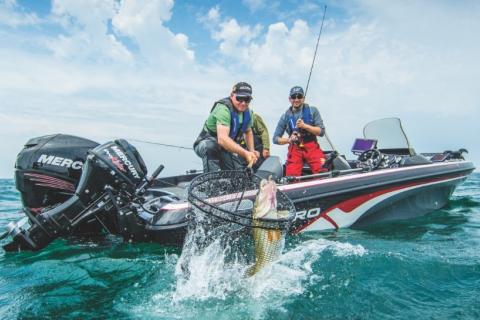
Walleye fishing is part of the fabric of communities across the Great Plains and Midwest. Catching these fish requires an understanding of temperature and its effects on where fish move and how they use the water column. While their exact habits will vary by region and waterbody, here is a high-level breakdown of how to understand walleye behavior—and how to catch them—throughout the year.
 |
| During the many parts of the year, walleye can be found around nearshore structure. |
Water Temperature, The Presence of Bait and Structure
In many ways, successful walleye fishing is a matter of understanding three variables: water temperature, the presence of baitfish and structure. All else being equal you are most likely to find walleye in a place with a combination the right temperature, bait and structure. Where exactly you’re likely to find these places will change with the seasons.
Walleye are a cold water fish. Changes in temperature dictate the walleye’s seasonal migrations and where they hang in the water column. It will be a temperature threshold, rather than a specific date on the calendar, that will provide the most reliable indication of where to find and catch walleye.
In the springtime when waters begin to warm, walleye move into rivers to spawn. After the spawn, the fish return to the main waterbodies of lakes but remain near shore and around structure.
Later in the spring, when water temperatures rise into the mid-60s, walleye move into deeper water and start to suspend as they follow baitfish. When the water temperature begins to decline as the fall comes on, walleye once again move shallower and stage off of main lake points throughout the fall.
When looking for walleye, target areas of the lake with water temperatures that are in the right zone. If you find bait in the right zone—especially if you’re in proximity to structure, you’ll likely find walleye. Here is a rundown of walleye fishing through the year.
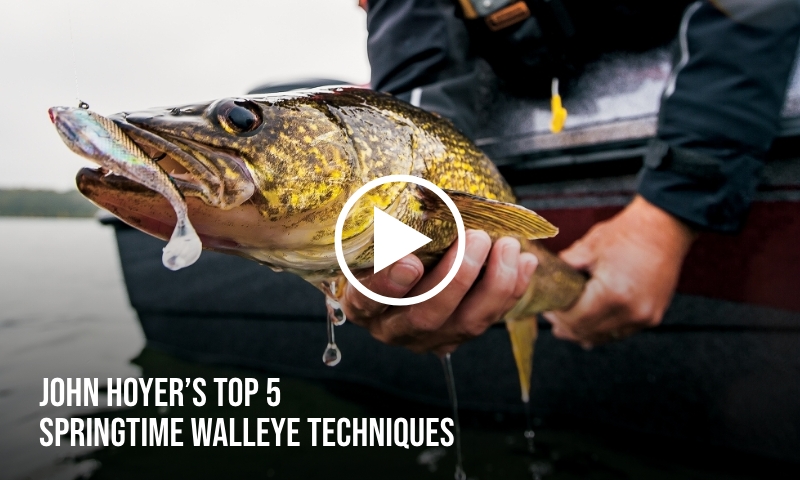 |
| Casting jigs and soft plastics to structure can produce early season walleye. |
Springtime Walleye Fishing
Walleye spawn in the springtime. The exact timing of the spawn depends on water temperature— generally taking place when the water warms to between 42 and 48 degrees. In the Midwest and the more southern reaches of walleye territory, this might be March. In the more northerly aspects, it may take place in April.
In waterbodies that have such access, a large percentage of walleye will run up river to spawn. In lakes or reservoirs that do not have river access, walleye will spawn in areas around rip rap. Fish will stage around river mouths for a time before the spawning begins—and there will likely be a few fish upriver even as the spawning season dwindles.
During this 3-4 week spawning season, groups of walleye will position themselves in transitional areas with access to structure and main river channels. Look for such areas as where humps, bars, gravel beds and points emerge from river channels. The presence of bait will also play a highly important role in their distribution—you find the bait, you find the walleye.
During the spawn, you can target groups of fish—with numbers of smaller males following a single, larger female. The tendency of walleye to group together makes marking them with sonar a great springtime tactic.
Spring Walleye Tackle and Tactics
Springtime walleye fishing involves light tackle, jigs and soft plastics. Most anglers prefer spinning tackle, opting for reels in the 1000-2500 class range spooled with 4-8 pound mono or 8-10 pound braid.
For rods, you’ll likely opt for a medium to medium light weight spinning rod in the range of 6-7’. Whether fishing braid or mono, you might opt for a 3’ leader of 8-10-pound fluorocarbon.
Casting 1/8 to 1/4 ounce jig heads with 3-4” paddle tails, grubs, or bucktail jigs are all tried and true walleye tactics. You can cast toward structure and work the jig slowly, bouncing it along the bottom.
Late Spring and Early Summer Walleye Fishing
After the spawn, walleye leave the rivers and return to main lake bodies. During the period of time between their return to the main lake before water temperatures rise significantly, walleye may be found shallow on structure around the lakeshore.
Fish will then spread out, dispersing around points, gravel bars and other forms of nearshore structure. During this time of year, you can target walleye in between 3 and 20-feet of water.
Where you will ultimately locate walleye depends largely on water temperature and the presence of bait. Early in the season, fish will generally not be suspended. When fishing for walleye, target the bottom.
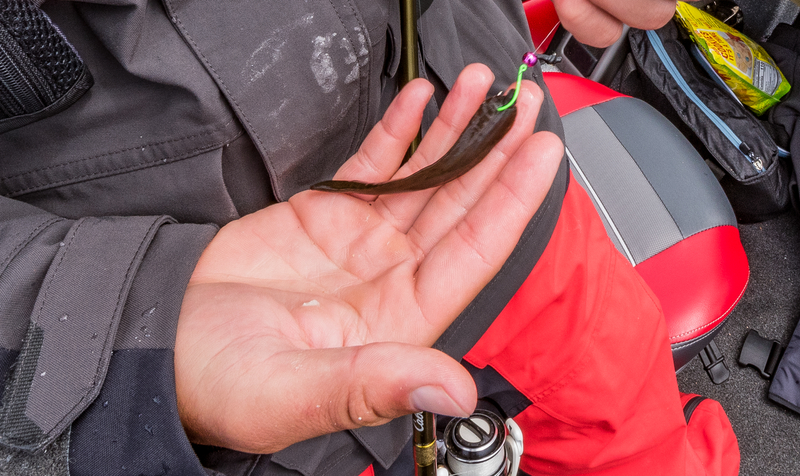 |
| Live bait and light spinning outfits: part of every walleye angler's late spring arsenal. |
Early Summer Walleye Tactics
Early summer walleye fishing is defined by trolling crankbaits and bouncing the bottom with live baits. When trolling, you’ll want to target main lake points and structure near shore.
When you mark fish or troll through an area with lots of walleye, you might switch to live baiting. This may involve slow trolling (with your trolling motor) or drifting through productive areas.
The standard live bait walleye rig involves a slip sinker, a 3’ leader of 8- or 10-pound fluorocarbon or monofilament, and a night crawler, leech or minnow fished on a size six octopus style live bait hook. Depending on depth and presence of current, your sinker will range between 1/4 to 1/8 of an ounce (you want just enough weight to get your bait into position along the bottom, but not so much that it effects your presentation).
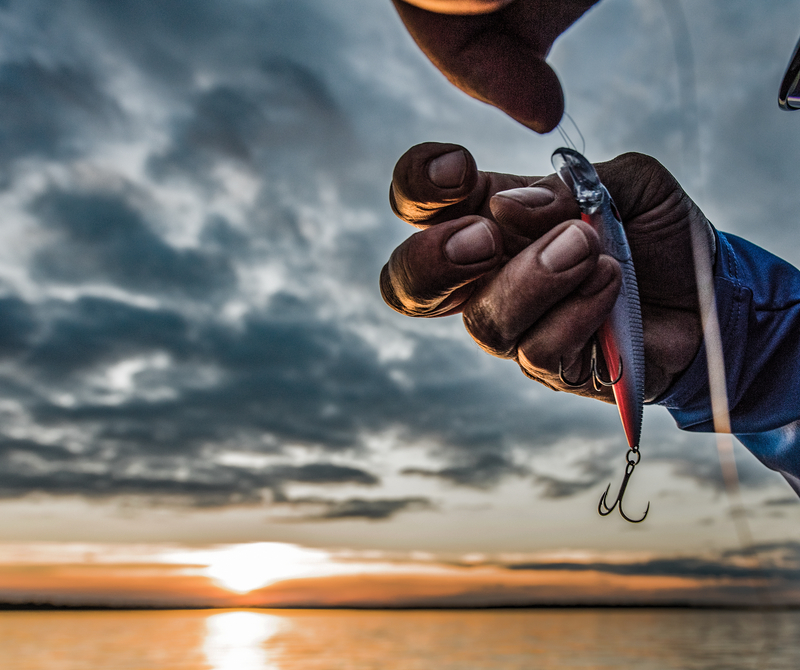
Summer Walleye Fishing
As spring turns to summer and water temperatures continue to rise, walleye will move into deeper water. Rather than orienting themselves along the bottom—as they do in the early season—walleye will suspend in small groups. While there exists some regional variation, this movement generally takes place when water temperatures rise into the mid-60s or 70s.
The exact depth of where the fish will hold—and the level they suspend—largely depends on the presence of bait. In many places, walleye will suspend in the main lake body in deep water around the thermocline.
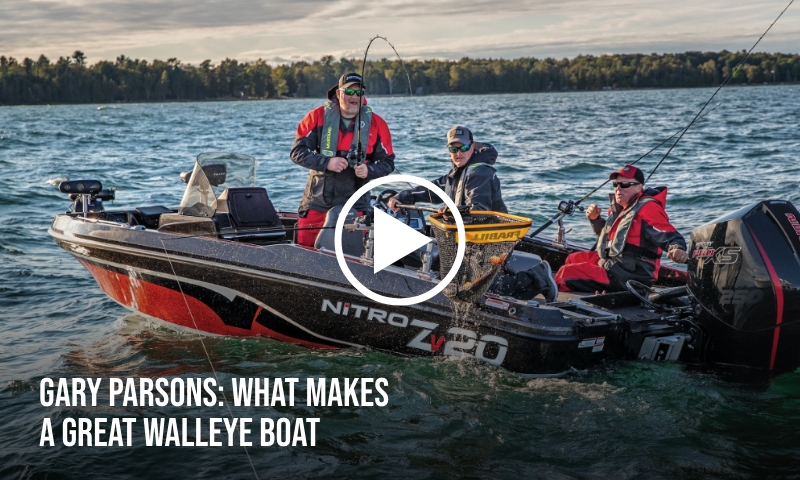
Summer Walleye Tactics
With fish suspended in small groups in open water, summertime walleye fishing largely involves trolling crankbaits. This has several advantages.
Trolling allows you to cover a lot of ground. Because fish tend to run in small groups of three or four and orient themselves in open water (as opposed to physical structure), it generally difficult to target them with jigs or live bait.
 |
| Trolling crankbaits on planer boards is a tried-and-true tactic for summertime walleye. |
The gear you’ll use for summertime walleye fishing includes line counter trolling reels spooled with braided or lead core line and planer boards or snap-on weights. The planer boards come in port or starboard configurations, effectively increasing the trollable area behind your boat. With one planer board pulling left and the other pulling right, planer boards decrease your chances of tangle while increasing the number of lures you can put into the water.
In many parts of the country the nightcrawler harness is a secret weapon of walleye fishing. From about mid-April through July and August (depending on region and water temperature), slow trolling harnesses through groups of walleye can product great results.
Trolling crawler harnesses involves planer boards and an ounce or ounce and a half of lead. Tie your harness on a 3' leader connected to a snap swivel. Connect your sinker to the swivel. Then run between 25 feet or so of line between our swivel and the planer board.
If you're fishing over structure, take your boat up wind or up current of your target bottom and troll slowly (between 1 and 1.25 miles per hour) through the area that you're targeting. The slow trolling provides a natural presentation, the spinner attracts walleye to the bait. Walleye have a hard time resisting an artfully presented night crawler.
Fall Walleye Fishing and Tactics
As summer turns to autumn and water temperatures fall, walleye return to shallower water. As they transition from the open water to more nearshore haunts, walleye form larger groups.
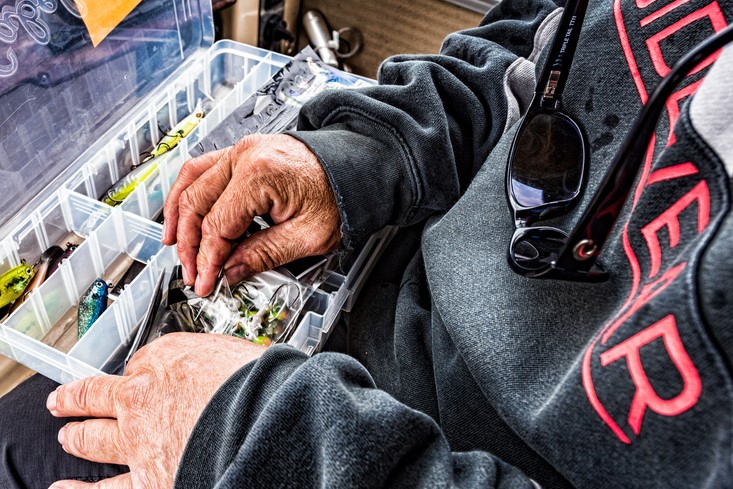
This combination—larger bodies of fish found in shallower water—opens a variety of fishing options. Many anglers target fall walleye fishing jigs and paddletails.
Others locate groups of fish on their sonar and catch them jigging vertically. Boats equipped with live sonar can locate these larger schools and stay above them. Anglers then drop jigging spoons and jigging raps on the walleye beneath them.
You can also incorporate some horizontal jigging to your arsenal. This involves letting the jig lie dormant for two or three seconds between jerks on the rod. This approach works well, as walleye often like to pin jigs to the bottom. This is a great approach, especially if the bite slows down.
Depending on depth and current, the jigs and raps will range in size between 3/8 and about an ounce. Jigs will range between 1/8-1/4 when fishing shallow. They will be larger for deeper fishing applications. While fewer anglers choose live bait in the fall, some will fish a jig head tipped with a live minnow.
Winter Walleye Fishing and Tactics
Before lakes ice up, winter walleye fishing involves similar patterns to fall. Walleye remain in schools, roving the main body of lakes following bait. Anglers can catch these fish by vertical jigging.
As winter progresses, walleye will stay out deeper in main lake basins or off of rock points. The fish are often dispersed following the depth contour of the lake. This pattern will remain the same through the winter until they stage for their pre-spawn and spawn when they run up rivers.
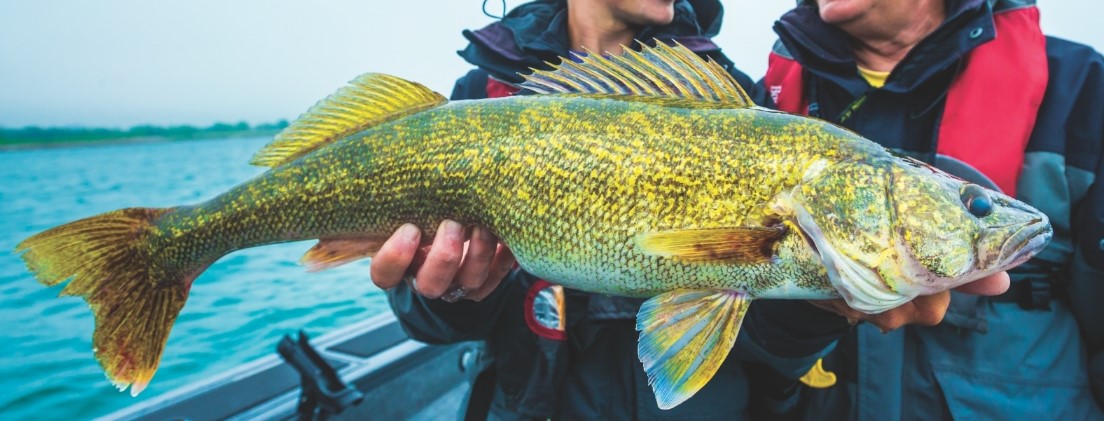
- 16078 views

